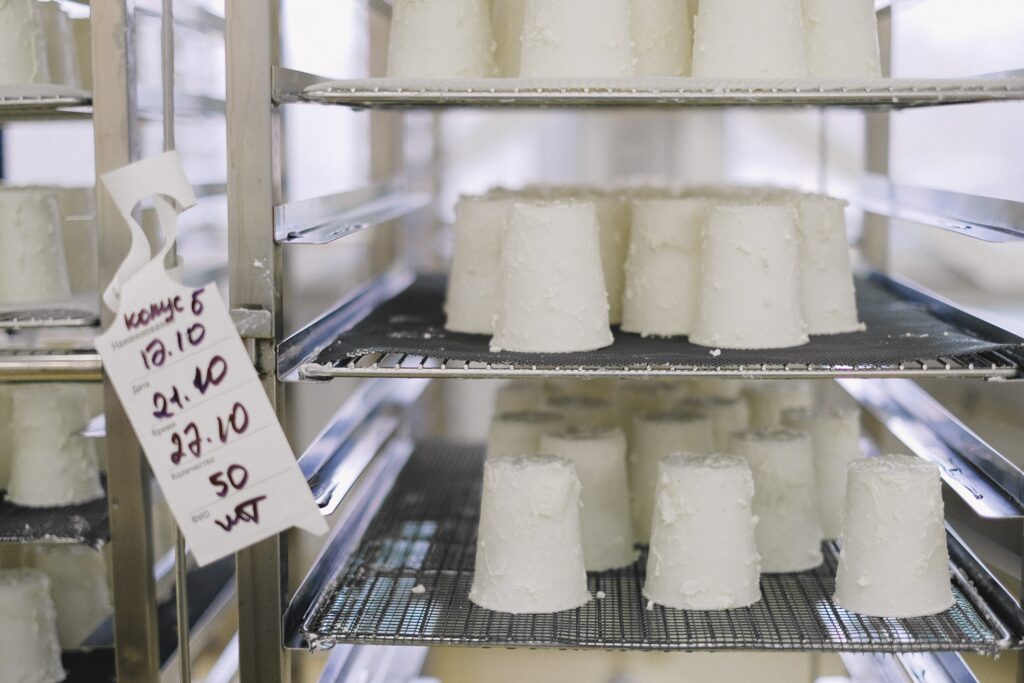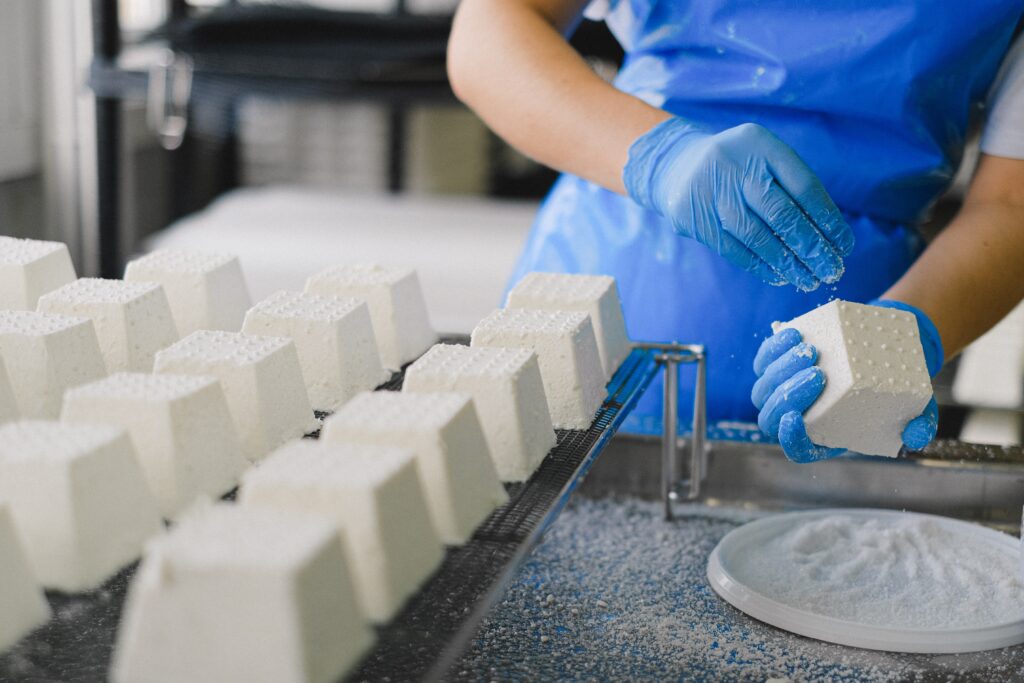
Ricotta cheese is a versatile ingredient that can be used in a variety of dishes, from savory pasta to sweet desserts. But what happens when you have leftover ricotta cheese that you can’t use up right away? Can you freeze it? In this post, we’ll explore everything you need to know about freezing ricotta cheese, including tips, recipes, and frequently asked questions.

What is Ricotta Cheese?
Ricotta cheese is a fresh, soft Italian cheese that is commonly made from the whey that is leftover from the production of other cheeses such as mozzarella and provolone. It has a creamy texture and a slightly sweet flavor. Ricotta is low in fat and high in protein, making it a popular ingredient in many recipes, including desserts like cheesecake, as well as savory dishes such as lasagna and stuffed shells. Ricotta is also commonly used in Italian cuisine, and is a popular ingredient in dishes like cannoli and gnocchi.
How is Ricotta Cheese Made?
Ricotta cheese is made by heating the whey that is left over after making other cheeses. The whey is heated until it reaches a temperature of around 195°F (90°C). At this point, the proteins in the whey coagulate and separate from the liquid. The whey is then strained through a cheesecloth or fine mesh sieve, which catches the curds and leaves behind the liquid whey.
The curds are then collected and placed into molds, where they are allowed to drain for several hours to remove any excess liquid. The resulting cheese is soft, moist, and creamy, with a slightly sweet flavor.
Some variations of ricotta cheese are made with whole milk or a combination of whole milk and whey, which produces a richer and creamier cheese. These methods typically involve adding an acid, such as vinegar or lemon juice, to the milk or whey to help the proteins coagulate and form curds.

My Favourite Ricotta Cheese Recipes
- Baked Honey Ricotta
- Potato and Ricotta Puff Pastry Tart
- Asparagus and Ricotta Pie
- Honey, Basil and Tomato Bruschetta on Ricotta
See more recipes here.
Can You Freeze Ricotta Cheese?
The short answer is yes, you can freeze ricotta cheese. However, it’s important to keep in mind that freezing can change the texture of ricotta cheese. When frozen, the cheese may become slightly grainy and lose some of its creamy texture. It’s best to freeze ricotta cheese that will be used in cooked dishes, such as lasagna or stuffed shells, rather than for use in recipes that require the cheese to be fresh.
Tips for Freezing Ricotta Cheese
Here are some tips to help you freeze ricotta cheese properly:
- Use an airtight container or freezer bag: Place the ricotta cheese in a container or bag that is freezer-safe and airtight. You can also use plastic wrap to wrap the cheese tightly before placing it in a container or bag.
- Portion the cheese: If you plan to use the ricotta cheese in small amounts, consider freezing it in an ice cube tray. Once frozen, transfer the ricotta cubes from the ice cube trays to a container or bag. This way, you can easily thaw only the amount you need.
- Label and date: Always label the container or bag with the date of freezing and the type of cheese. This will help you keep track of how long the cheese has been in the freezer.
- Freeze quickly: Freeze the ricotta cheese as soon as possible after purchasing or making it to preserve its freshness.
How To Defrost Ricotta Cheese
Defrosting ricotta cheese is a simple process, but it’s important to do it properly to ensure the cheese maintains its texture and flavor. Here’s how to defrost ricotta cheese:
- Remove the frozen ricotta cheese from the freezer and place it in the refrigerator. Leave it to defrost in the fridge for at least 24 hours.
- After 24 hours, check the ricotta cheese. If it is still partially frozen, leave it in the refrigerator for another 12 hours or until completely defrosted.
- Once the ricotta cheese is defrosted, remove it from the refrigerator and let it sit at room temperature for about 30 minutes to an hour. This will allow it to come to room temperature and soften slightly.
- Give the ricotta cheese a stir or mix it gently to help redistribute any moisture that may have separated during the freezing and thawing process.
Note: It’s important not to defrost ricotta cheese in the microwave or in hot water, as this can cause the cheese to become grainy or lose its texture. Defrosting the cheese slowly in the refrigerator is the best way to maintain its quality.
Recipes Using Frozen Ricotta Cheese
Here are some recipe ideas that use frozen ricotta cheese:
- Stuffed Shells: Stuff cooked pasta shells with a ricotta cheese mixture, cover with your favorite sauce, and bake until bubbly.
- Lasagna: Layer lasagna noodles with a ricotta cheese mixture, tomato sauce, and shredded mozzarella cheese, and bake until golden and delicious.
- Ricotta Cheesecake: Use thawed ricotta cheese to make a rich and creamy cheesecake that will impress your friends and family.

FAQs About Freezing Ricotta Cheese
How Long Does Cheese Last in The Fridge?
Fresh ricotta cheese typically lasts 5-7 days in the refrigerator when stored properly. To maximize the shelf life of ricotta cheese, it should be stored in an airtight container or covered tightly with plastic wrap to prevent it from drying out or absorbing any odors from other foods in the fridge. It’s also important to check the cheese regularly for any signs of mold or spoilage, and to discard it if it looks or smells off.
How long does ricotta cheese last in the freezer?
Ricotta cheese can be frozen for up to three months. After this time, the texture and flavor of the cheese may start to deteriorate.
Can you freeze fresh ricotta cheese?
Yes, you can freeze fresh ricotta cheese using the same methods mentioned above.
Can you freeze ricotta salata?
No, ricotta salata is not recommended for freezing, as the texture and flavor of the cheese can be adversely affected.
In conclusion
Freezing ricotta cheese can be a convenient way to extend its shelf life and reduce food waste. Just be sure to follow the tips outlined above to ensure that the cheese maintains its quality and flavor.

Christopher is a food and lifestyle expert, recipe developer and the content creator behind May Eighty Five. With years of experience in the kitchen, he also shares tips, tricks and how to’s that he has learnt over the years. Every week, he shares quick, simple and mostly healthy recipes along with some home and entertaining tips. You will find flavorful cocktails, delicious appetizers, tasty mains and some indulgent desserts. As a home decor enthusiast, he also likes to share simple DIY projects and simple tips for a beautiful home.








5 Comments